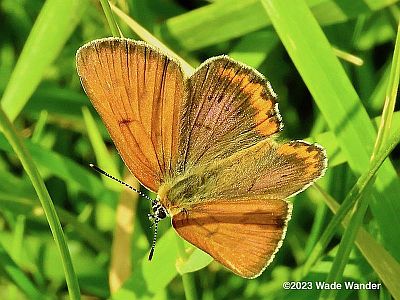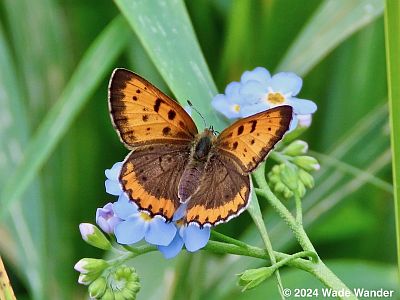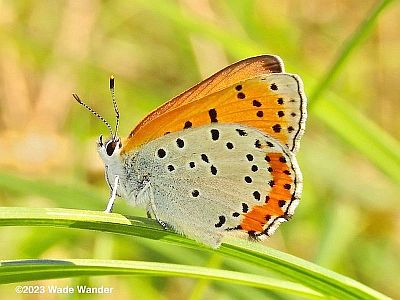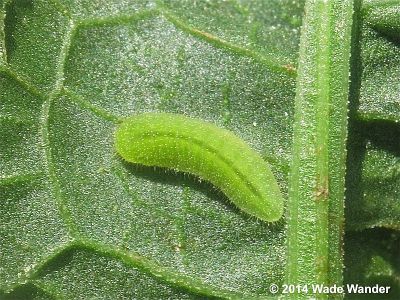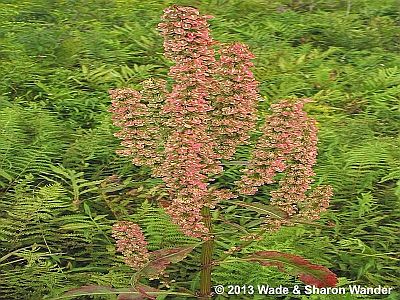New Jersey Butterfly Club
A chapter of the North American Butterfly Association (NABA)
Bronze Copper
Lycaena hyllus
Identification: Small—1.4” (much larger than American Copper). Sexes similar below. Above: Male FW dark with purplish sheen when fresh, and HW with wide orange band along margin. Female FW differs in having a large, yellowish-orange central patch with prominent dark spots. Below: FW orange with small dark spots and grayish trailing edge. HW gray with dark spots and a wide orange border along trailing edge. Similar species: American Copper is smaller, brown and bright (not yellowish) orange above, and has a much narrower orange band along trailing edge of HW below.
NJ Status and Distribution: Resident. Classified as Endangered in NJ. Recent reports are mainly from Sussex and Salem counties.

Habitat: Open, often wet, often disturbed (even agricultural) habitats. Typically found near dock plants (genus Rumex). In Sussex County, this species has been found at several sites in, or very near, floodplains.
Flight Period: Three somewhat overlapping broods from early June to late September with peaks in June, mid-summer, and late summer. Extreme dates: North Jersey 6/6—10/11; South Jersey 5/23—11/12.
Caterpillar Food Plants: Docks such as Curled Dock (Rumex crispus), Great Water Dock (R. orbiculatus), and Water Dock (R. verticillatus). Curled Dock is especially common and widespread, so Bronze Copper does not appear to be host-plant limited.
Overwintering Stage: Egg.
Good Locations: None listed because of endangered-species sensitivity.
Comments: Like the mythical Pooka of the classic movie “Harvey,” Bronze Coppers turn up here and there, and now and then. Most known sites support from 1-5 or so individuals.
